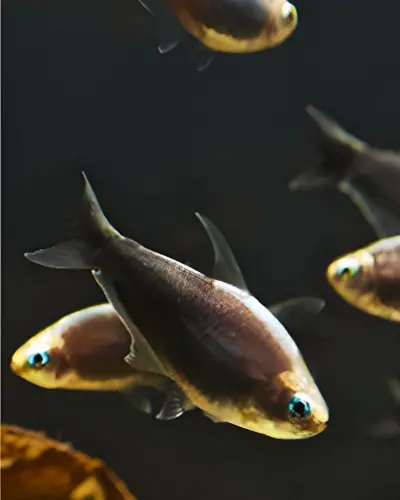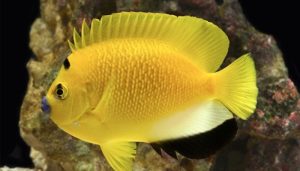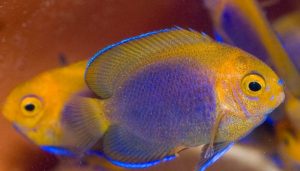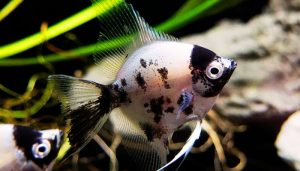Are you looking to add the mesmerizing Black Emperor Tetra to your aquarium? This guide covers everything you need to know about their care, tank mates, and breeding to ensure they thrive in your home setup. But what makes these elegant tetras stand out among other freshwater fish?
Black Emperor Tetras are hardy, peaceful fish that flourish in well-planted tanks with stable water conditions.
They pair well with other small, non-aggressive species like neon tetras and Rasboras. When it comes to breeding, providing soft, slightly acidic water and a separate breeding tank increases success.

But that’s just the beginning! Aquarium experts like Heiko Bleher emphasize the importance of a balanced diet and proper water parameters for their health. So, let’s dive into the ultimate Black Emperor Tetra care guide to help you create the perfect environment for these stunning fish.
Black Emperor Tetra (Nematobrycon palmeri ‘black’)
The Black Emperor Tetra, a striking morph of the classic emperor tetra, is characterized by its satin black hue and vibrant blue or green eyes. This tetra species typically grows to about 4.2 cm in length, making it an ideal choice for community aquariums.
With a peaceful temperament, the Black Emperor Tetra is best kept in schools of six or more to promote natural behavior and reduce stress. Their dorsal and caudal fins are elegantly shaped, adding to their aesthetic appeal. When housed in an aquarium with subdued lighting and floating plants, the Black Emperor Tetra thrives, showcasing its stunning coloration and lively activity.
In addition to their beautiful appearance, Black Emperor Tetras are social fish that prefer to swim in groups, which closely resembles their natural habitat in the wild.
To replicate their native environment, aquarists should provide a well-planted tank with a soft substrate and plenty of hiding spots. The presence of dwarf shrimp and their fry can coexist easily with these tetras, as they are generally non-aggressive.
By understanding the specific needs of the Black Emperor Tetra, fish keepers can create a peaceful community that allows these south America fish to flourish.
Black Emperor Tetra Tankmates
Choosing suitable tank mates for the Black Emperor Tetra is crucial to maintaining a harmonious aquarium environment. Due to their peaceful nature, these tetras can coexist well with other calm species such as rasboras and amphiloxus black.
However, they may become stressed if housed with more boisterous fish that exhibit aggression or excessive activity. Therefore, tank mates should be selected carefully to ensure compatibility and reduce the likelihood of disturbances. Additionally, smaller species like dwarf shrimp can coexist without any issues, as the Black Emperor Tetra is not known to prey on them.
It’s important to remember that the Black Emperor Tetra thrives in schools, so adding a group of at least six will help them feel secure and promote natural schooling behavior. When introducing new tank mates, always monitor interactions closely, especially during the acclimatization period.
A well-planned aquarium setup with plenty of plants and hiding spots will not only provide comfort to the Black Emperor Tetra but also offer refuge for smaller or shyer tank mates, ensuring a peaceful coexistence among all aquatic inhabitants in the aquarium.
Emperor Black Tetra Diet and Feeding
The Emperor Black Tetra has a diverse diet that consists of various food types, including flakes, pellets, and live or freeze-dried foods. Fish keepers should aim to provide a balanced diet to encourage healthy growth and vibrant coloration.
High-quality flakes and pellets formulated for tetras are excellent staples, while live food such as daphnia bloodworms, and freshly hatched brine shrimp can be offered as treats. This variety not only meets their nutritional needs but also stimulates their natural hunting instincts, promoting an active lifestyle.
Feeding frequency should be tailored to the specific needs of the fish, with smaller portions given two to three times a day. It’s crucial to avoid overfeeding, as uneaten food can pollute the tank, leading to poor water quality.
Observing the fish during feeding can help ensure they readily accept the offered food. Providing a mix of foods will also enhance their coloration and overall health. By paying attention to their diet, fish keepers can ensure that their Black Emperor Tetras thrive in the aquarium environment.
Emperor Tetra Natural Habitat and Aquarium Care
The natural habitat of the Black Emperor Tetra lies in the freshwater rivers of Colombia, specifically the Atrato and San Juan River basins. These rivers are characterized by soft, acidic water with plenty of aquatic vegetation.
To replicate these conditions in an aquarium, fish keepers should maintain a water temperature between 22°C and 28°C and a pH level between 6.0 and 7.5, ideally with a dKH of around 5. The tank should be well-planted with floating plants to mimic the subdued lighting of their natural environment, which enhances their vibrant coloration.
In terms of tank setup, a sponge filter is recommended to maintain gentle water flow, as intense currents can cause stress to these fish. Additionally, providing a soft substrate will help create a comfortable environment for both the tetras and potential tank mates like dwarf shrimp.
Regular water changes and monitoring of water parameters will ensure a healthy aquatic environment for the Black Emperor Tetra. By replicating their natural habitat, fish keepers can promote the health and happiness of these captivating freshwater fish.
Remember: Although emperor tetras are relatively small, with males reaching lengths of up to 3 inches and females averaging around 2 inches, they require adequate tank space for swimming and schooling. It is advisable to have a minimum tank size of 20 gallons, and longer tanks are favored over taller ones.
Breeding the Emperor Black Tetra
Breeding the Emperor Black Tetra can be a rewarding experience for fish keepers, as these fish are relatively easy to breed under the right conditions. To initiate breeding, it is advisable to set up a separate breeding tank equipped with a sponge filter for gentle water circulation and a substrate of fine gravel or marbles.
It is essential to provide plenty of plants and spawning mops, as the females will lay their eggs among the vegetation. Breeding pairs typically consist of one male and one or two females, as males are usually more aggressive in courting and defending their territory during the breeding process.
The male and female breeding process begins when conditions are favorable, such as slightly elevated water temperature and soft, acidic water. Once the female lays eggs, which can range from fifty to one hundred, the adults should be immediately removed from the tank to prevent them from eating the fry.
The eggs will hatch within 24 to 48 hours, and the fry can be fed with infusoria or freshly hatched brine shrimp to ensure proper growth. With attentive care, the young Black Emperor Tetras will grow and thrive, adding to the beauty of the aquarium.
Conclusion
The Black Emperor Tetra is a stunning addition to any aquarium, known for its vibrant coloration and peaceful nature. By understanding their care requirements, suitable tank mates, and breeding practices, fish keepers can create an ideal environment for these freshwater fish. With the right conditions, the Black Emperor Tetra not only thrives but also adds a captivating presence to the aquatic landscape. Whether you’re a seasoned aquarist or a newcomer, these tetras are sure to bring joy and beauty to your fishkeeping experience.
Recommended posts
- Black Skirt Tetra Breeding 101: (A Comprehensive Guide)
- Black Skirt Tetra Fish 101: A Comprehensive Beginners Guide!
- Ember Tetras 101: The Complete Guide to Happy Aquarium Fish!




